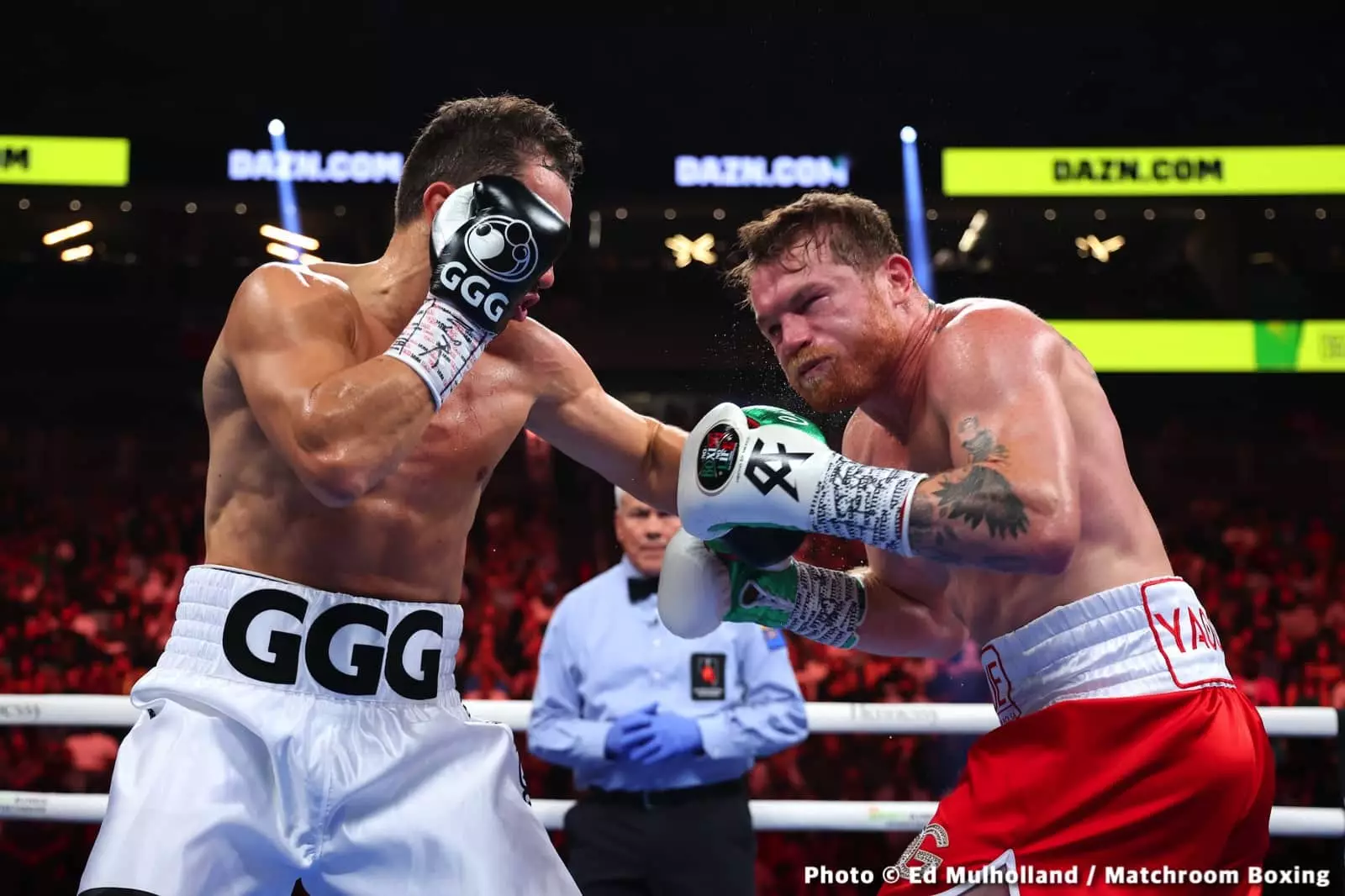When evaluating the prospects of a highly skilled fighter like Terence Crawford stepping into the ring against a legend such as Canelo Alvarez, it’s vital to scrutinize the fundamental differences in their physical attributes and fighting styles. While Crawford is undoubtedly an exceptional, technically proficient boxer with a pristine undefeated record, his power — or lack thereof — appears to be his Achilles’ heel in this high-stakes matchup. Abel Sanchez’s remarks shed light on this critical issue, emphasizing that Crawford simply does not possess the knockout punch comparable to Gennadiy Golovkin, the fighter renowned for his devastating power at middleweight and super middleweight divisions.
Golovkin’s ability to stand firm on the front foot, imposing his will with thunderous punches, provided him with a strategic edge in neutralizing opponents like Canelo. Crawford’s style, driven more by speed and technical finesse, may not translate effectively in a slugfest against a puncher like Canelo, who excels at timing and counterpunching. Without the power to keep Canelo at bay, Crawford risks becoming predictable, opening avenues for Canelo to exploit his offensive and defensive gaps. The difference in their physiques is fundamental — Golovkin’s natural strength at 160 pounds made him a formidable barrier, whereas Crawford has yet to develop similar power at 168 pounds, a weight class he entered only recently.
Physical Development and Timing: Critical Gaps in Crawford’s Preparation
One of Sanchez’s pointed observations pertains to Crawford’s developmental process, implying that he has not yet sufficiently built the requisite body mass and strength to contend with Canelo’s physicality. This is a crucial factor because boxing at the elite level is as much about physical endurance and strength as it is about skill. When fighters ascend divisions, they often need time to adapt their physiques to new weight classes, allowing for the development of both muscle and resilience. Crawford’s rapid move to 168 pounds and his decision to skip tune-up fights suggest a rushed pathway, potentially leaving him ill-prepared for the power, volume, and durability required at this level.
Moreover, Sanchez highlights that Crawford’s recent performance against Israil Madrimov at 154 pounds did not showcase sufficient power, relying heavily on volume and endurance rather than knockout ability. The implication is clear: without significant body transformation and power development, Crawford’s chances of neutralizing Canelo’s heavy-hitting style diminish considerably. It’s akin to trying to race a thoroughbred with the strength of a workhorse; skill alone cannot compensate for physical limitations against a fighter of Canelo’s caliber.
The Psychological and Tactical Edge: Golovkin’s Unique Fighting DNA
Golovkin’s superiority in this context is not merely a matter of muscle and punch power; it’s deeply rooted in his fighting DNA. The fact that Sanchez explicitly states Golovkin was a “160-pounder, very strong, very dominant, a big puncher,” underscores that the physical toll and mental toughness Golovkin wielded played a significant role in his ability to withstand Canelo’s assaults and impose his will. Crawford’s skill set, impressive as it is, operates differently. His mastery lies in multiple aspects of boxing, including footwork, head movement, and shot selection, but these attributes are less effective if he cannot keep Canelo at distance or hurt him with a single punch.
Canelo, on the other hand, capitalizes on fighters who engage him, but in a calculated manner. Sanchez suggests that Crawford’s willingness to trade and fight at a high volume might open doors for Canelo to land his signature heavy shots. Golovkin’s tactical approach relied heavily on his ability to absorb and counter, something Crawford has yet to demonstrate at this level and weight class. Without comparable punch power, Crawford may find himself unable to impose his style effectively, especially if Canelo can time his counters and capitalize on Crawford’s moments of vulnerability.
The Rushed Path and Lack of Time for Development
Another glaring concern arising from Sanchez’s critique is Crawford’s hurried association with the 168-pound division. By choosing not to undertake an easing-in phase — such as tuning-up fights — Crawford has deprived himself of the gradual muscle and skill adaptation process necessary to excel against elite fighters like Canelo. This decision increases the likelihood of entering the ring underprepared, both physically and psychologically.
In boxing, division jumps are more than just about adding weight; they demand patience, proper conditioning, and technical adjustments. Crawford’s reluctance to take the necessary steps beforehand reveals an overconfidence that could prove costly. The immediate assumption that skill alone can overcome Canelo’s formidable power ignores the nuanced reality of physical development and strategic preparation needed at this level. The risk is clear: without the physical presence and knockout threat Golovkin offered, Crawford’s technical mastery might not suffice against a fighter as versatile and relentless as Canelo.
In summation, analyzing the team’s assessment reveals a broader truth about the importance of physicality and power in modern boxing. While Crawford’s talents are undeniable, they may not be enough when facing a physically imposing and tactically astute champion like Canelo, especially with a shortcut path to the division. Without a decisive upgrade in strength and knockout capability, Crawford’s chances of success dwindle significantly, making this fight not just a test of skill but also of physical dominance and strategic patience.

